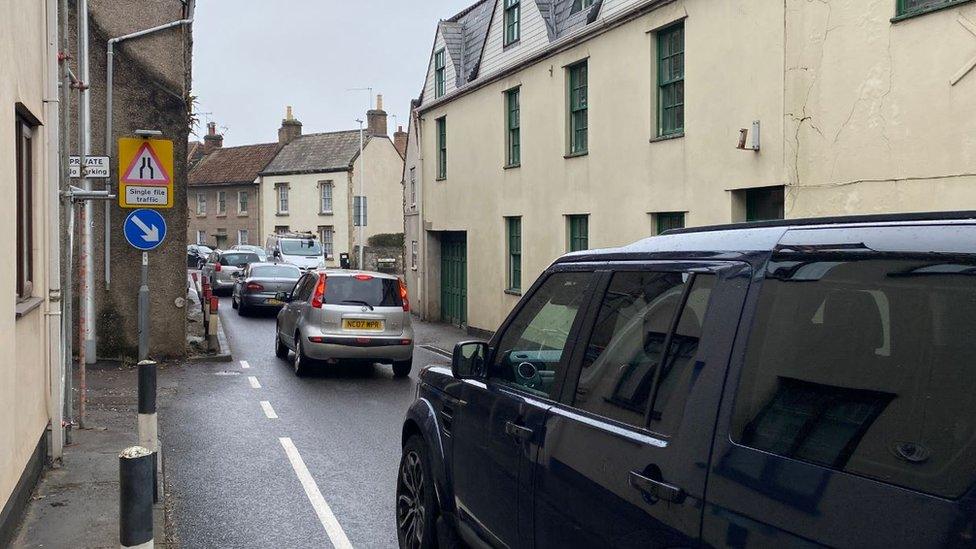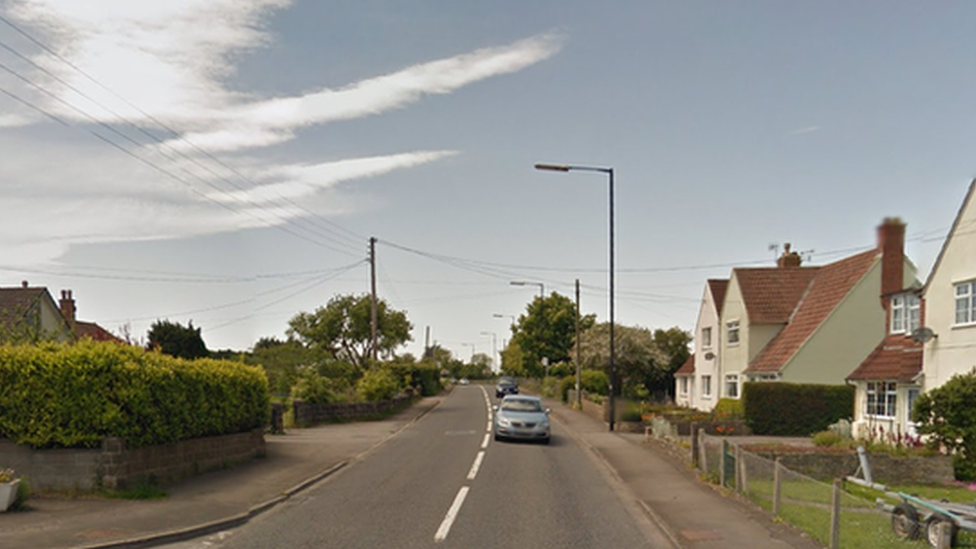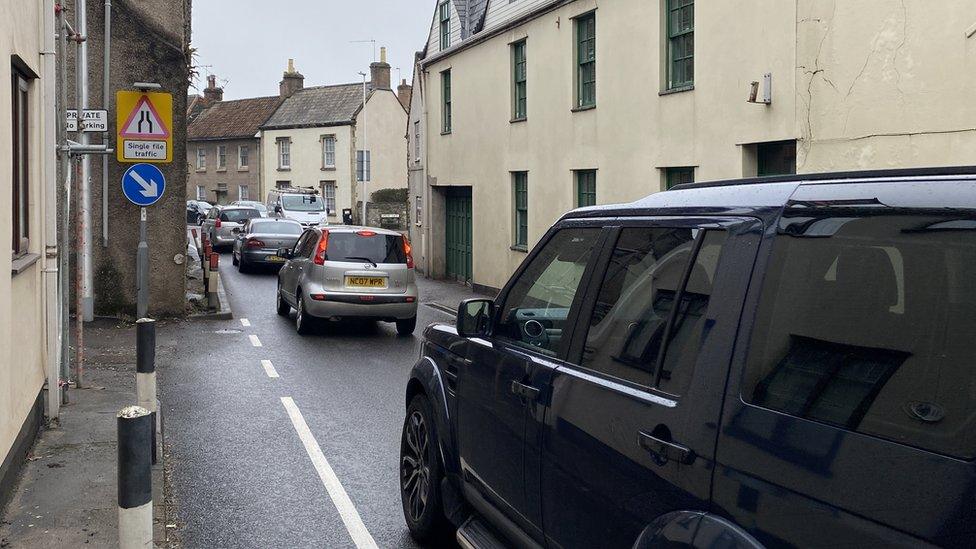Council approves an extra £12m for Banwell bypass
- Published

Congestion occures in Banwell as road traffic goes through a stretch of road called "the narrows"
North Somerset Council has approved an extra £12m to pay for a bypass around a congested village.
The road will allow traffic to avoid the small village of Banwell, where the A368 and A371 meet.
The budget for the bypass - which was set in 2018 - has increased by £23.9m.
The council initially received a grant of £66m from Homes England to build the new road, but a council meeting has been told the total cost is expected to hit £90m.
Councillors were told, in a full session on 11 July, that "significant inflationary pressures" has seen costs for the construction phase of the project exceed the budget by £23.9m.
The council is responsible for meeting cost overruns from its own resources, but a report stated that the council cannot afford to cover the full funding gap.
North Somerset leader Mike Bell said the council would need to put up an extra £11.9m to keep the project going.
Councillor Mike Solomon added: "This is an opportunity we really can't afford to let slip through our fingers."

The A371 carries traffic from Weston-Super-Mare through Banwell
Currently, two A-roads meet in the village and go through its narrow lanes, which at one point that locals call "the narrows" are only wide enough for one vehicle.
Banwell local and "build our bypass" campaign group organiser Steve Voller address the council urging them to support the bypass.
He said residents found life in the village "a living hell" due to "traffic pollution, traffic noise, and the ever-present danger of vehicles mounting narrow footpaths."
Fellow Banwell resident Pauline Trapp told the council that the bypass was "essential" would would result in better connectivity and benefit more places than just Banwell.
Council officers stated the final cost was still not fixed as some contracts had not been agreed, but there was contingency built into the budget.
The money will come from community infrastructure levy money, regeneration funds, and reallocating capital reserves.
Councillors unanimously voted to approve the funding.

Follow BBC West on Facebook, external, Twitter, external and Instagram., external Send your story ideas to: bristol@bbc.co.uk, external
Related topics
- Published16 March 2023

- Published30 December 2022

- Published6 November 2019
